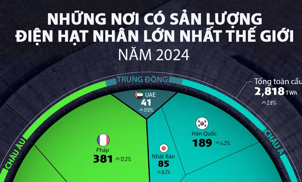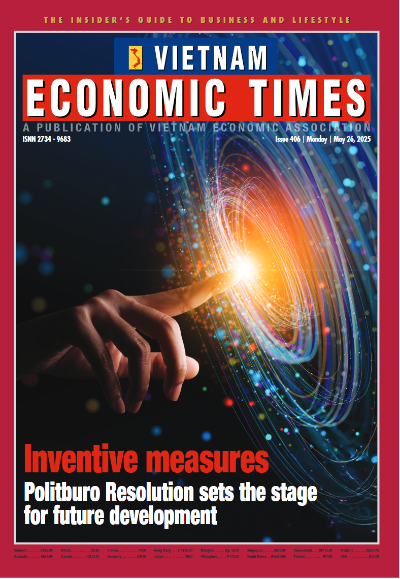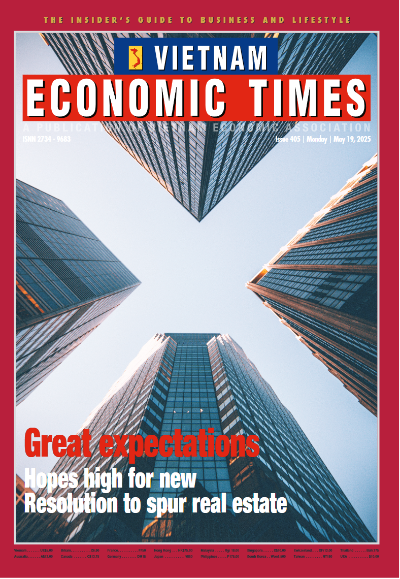How do you view the contribution of Vietnam’s private sector to the development of the country’s economy over the past 30 years?
Congratulations to Vietnam on this significant anniversary [Vietnam Entrepreneurs’ Day, 2004-2024]. Twenty years of celebrating entrepreneurship highlights the private sector’s success in driving Vietnam’s economic growth over the past two or more decades. The country’s phenomenal achievements stem from its private sector, bolstered by government support. While the private sector plays a crucial role, it requires regulatory support and public investments to thrive.
The importance of the private sector is evident, as it accounts for approximately 45 per cent of Vietnam’s GDP, 40 per cent of investments, and over 85 per cent of jobs. Without it, Vietnam wouldn’t have experienced such economic development or the rise of a robust middle class. Strengthening the private sector’s capacity to deliver is essential as Vietnam transitions its development model.
Vietnam has excelled in establishing itself as a manufacturing hub, moving from a rural, agriculture-based economy to a more industrialized, export-led one. The pressing question now is: What should its next steps be?
It is crucial to find ways to enhance the private sector’s ability to contribute further. Vietnam is at a transition point in its development model.
As you said, Vietnam is transitioning to a new growth model. Aligning with the global shift towards green and sustainable development, the private sector needs to identify new growth engines. What specific opportunities do you think the transition to a green economy offers Vietnam’s private sector?
To continue and accelerate growth, Vietnam must meet the government’s ambition for high-income status by 2045 and achieve net-zero emissions by 2050. This requires reforming policies to create a supportive legal and regulatory environment for the private sector.
Vietnam needs to balance its growth ambitions with sustainability, particularly regarding the green and circular economies. In my experience over the past two and a half years, the government and private sector are aligned on this. The question is not whether to pursue these goals, but how to implement them.
For Vietnam, where the IFC comes in is in helping establish conditions and identify opportunities, especially in energy transition. Vietnam’s energy demand is currently growing at over 8 per cent a year, necessitating an increase in electricity supply while making it greener. This requires additional technology and capital, largely from abroad. According to the World Bank Group’s country development report, Vietnam will need $368 billion by 2040 to meet its growth and sustainability goals, with over half coming from the private sector.
Encouraging private investment, both domestic and foreign, is crucial. Areas of opportunity include power, transportation, green buildings, and energy efficiency systems. While this presents challenges, Vietnam’s current positioning and future direction are positive. However, if the country fails to transition quickly, it risks losing out. Reports indicate that 78 per cent of overseas buyers would consider switching suppliers if they don’t align with sustainability objectives, posing a significant risk for economies that don’t adapt swiftly.
Many private Vietnamese companies are transforming to adapt to the green economy trend. What are some successful initiatives in the private sector that have significantly contributed to environmental sustainability and economic growth?
I can give you a few examples from the IFC’s portfolio. Last year, we helped BIDV, along with the World Bank, issue the very first green bond in Vietnam. The IFC also supported SeABank in issuing its first green bond and the first blue bond in the country. These initiatives are innovative, and it’s not surprising that the government may not have regulations in place yet. Our goal at the IFC is to catalyze these new ideas. Once established, we hope to see further scaling, but the rules need to be defined.
Vietnam would benefit from a taxonomy for green projects to help banks identify what qualifies as “green”. When working with banks, we focus on areas like green buildings. The IFC has its own green building certification program, called EDGE. Buildings certified under EDGE qualify for credit lines or bonds that the IFC helps clients issue.
This collaboration between the IFC and the private sector is crucial for innovation, but without the right regulations, it is challenging to develop the scale needed to make a significant impact.
What key challenges do you think the private sector faces in adapting to the green economy and circular practices, and how can these challenges be overcome?
I believe there are four main challenges we need to address.
First, we must push the government to create a supportive legal environment and invest in essential infrastructure, particularly in energy and transportation systems. For instance, improving the transmission grid is crucial since it currently represents a weakness in Vietnam’s power system.
Second, a significant portion of the required investment - around $164 billion - needs to come from the private sector. However, less than 5 per cent of banking assets are currently allocated to green projects. There’s a great opportunity for us to work with local banks to help them identify and support green investments. At the IFC, we are collaborating with banks like SeABank, HD Bank, and VP Bank to drive this systemic change.
Third, we need to focus on developing capital markets to attract foreign investment and scale up projects. Issuing thematic bonds, such as blue, green, and sustainability-linked bonds, can help us channel resources more efficiently than funding individual projects.
And fourth, as Vietnam aims to move up the value chain from low-skilled manufacturing to high-tech industries, we need to prioritize developing a skilled workforce. This includes fostering digital and language skills, along with creating an adaptable workforce capable of learning quickly in a rapidly-changing environment.
What do you believe drives business development? What strategies do you suggest companies employ to become more significant players in the global economy?
To succeed on a global scale, companies must prioritize strong environmental, social, governance (ESG) standards. Many international investors seek best-in-class companies that demonstrate a commitment to these principles, which are increasingly important in major markets. Vietnam has a unique opportunity here, as I have seen that its businesses are quick to learn, adapt, and execute effectively when they embrace these standards.
Another crucial strategy is being open to foreign investment and new ideas. Many Vietnamese companies are still family-controlled, which can hinder their ability to innovate and compete globally. Transitioning to include outside perspectives - whether from foreign partners or local outsiders - can bring fresh ideas and strategies. This openness can facilitate necessary changes in governance and operational practices.
Additionally, companies should diversify their shareholding structures and establish partnerships beyond Vietnam. Instead of solely benchmarking against local competitors, they should consider their rivals in Malaysia, India, China, Europe, and the US. This broader perspective will help them identify new opportunities and set ambitious targets for growth. With this mindset, Vietnamese companies can chart a clear path toward becoming significant players in the global economy.
How would you evaluate the effectiveness of current policies in Vietnam that encourage private sector participation in the green economy? Do you think these policies can be improved?
Frankly, while progress has been made, there is still significant work to be done. The Vietnamese Government has successfully set a vision for the country’s future, but bureaucratic processes can slow down implementation. Transitioning to a green economy is new for Vietnam, and like many countries, it is still learning how to navigate complex issues, such as carbon markets.
To truly embrace a green agenda, Vietnam needs to identify specific pain points and develop near-term solutions. For instance, a critical area for improvement is the power purchase agreement (PPA) framework. Currently, PPAs primarily involve Electricity of Vietnam (EVN), while international investors, including the IFC, find these agreements unsuitable for their needs. While domestic investors may have a different risk tolerance, international investors seek world-class contractual standards. This gap has hindered the flow of essential foreign investment, which is vital for scaling up projects.
Additionally, while there was initial enthusiasm for offshore wind projects, progress has stalled, with some international investors reconsidering their commitments due to a perceived lack of momentum and action from the government. It is essential for the government to act decisively during this transition period. Vietnam is growing at a rate of 6-6.5 per cent, but complacency could jeopardize future growth. Addressing infrastructure needs and ensuring a robust legal and regulatory framework will be crucial for enhancing private sector contributions to Vietnam’s sustainability development goals.


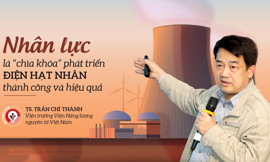
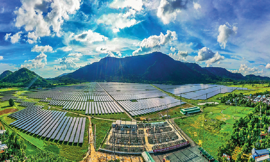


![[Interactive]: Toàn cảnh kinh tế Việt Nam tháng 7/2025](https://media.vneconomy.vn/302x182/images/upload/2025/08/0675413e3e-4a53-4c15-ae1f-e8883264607e.png)

